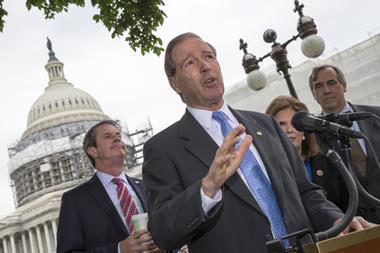First test of powers of revamped Toxic Substances Control Act
The US Environmental Protection Agency (EPA) has taken one of its first concrete actions under the newly revamped law that regulates chemicals in America. It plans to reduce exposure to five persistent, bioaccumulative and toxic (PBT) chemicals. The EPA is required to make such a list under the new updated Toxic Substances Control Act (TSCA) that became law earlier this year, which expands the agency’s authority on testing of new and existing chemicals.
‘The threats from persistent, bioaccumulative and toxic chemicals are well-documented,’ said Jim Jones, assistant administrator for the EPA’s office of chemical safety and pollution prevention, in a statement. ‘The new law directs us to expedite action to reduce risks for these chemicals, rather than spending more time evaluating them.’
The five PBT chemicals that will be fast-tracked are decabromodiphenyl ether (Deca-BDE), which is used as a flame retardant in textiles, plastics and polyurethane foam; hexachlorobutadiene, which is used in the manufacture of rubber compounds and lubricants and as a solvent; pentachlorothiophenol, which is used as an agent to make rubber more pliable in industrial uses; tris(4-isopropylphenyl) phosphate, which is used as a flame retardant in consumer products and other industrial uses; and 2,4,6-tris(tert-butyl)phenol, which is used as a fuel, oil, gasoline or lubricant additive. The deadline for the agency to act on these chemicals is June 2019.
The updated TSCA law provided manufacturers with an opportunity to request that the EPA conduct risk evaluations for PBT chemicals by September 2016 as an alternative to expedited action. The agency has been asked to conduct risk evaluations for two chemicals that can be used in fragrance mixtures.
However, the EPA said it must move ahead to take expedited action on the remaining PBT five chemicals it has identified, in order to reduce exposure ‘to the extent practicable’. After the EPA finishes identifying where these chemicals are used and how people are exposed to them, it plans to propose limits on their use.
The American Chemistry Council (ACC) highlights the fact that the revamped TSCA law requires the EPA to conduct an exposure assessment to better understand sources and levels of exposures for these PBTs. ‘We expect that, in addition to identifying the substances, EPA will make clear how it expects to conduct the additional analyses that will support an eventual decision on the measures that might be necessary to control exposures,’ the trade group said.
Meanwhile, the Environmental Working Group’s legislative attorney, Melanie Benesh, expressed hope that the EPA’s move to take expedited action on these five PBT chemicals indicates that the agency will work quickly to meet the strict deadlines required by the new TSCA law. ‘But, we are deeply disappointed that industry is exploiting a loophole in the new law to delay action on two chemicals commonly used in fragrances,’ she added, suggesting that they are also believed to build up in bodies and should therefore be subject to the same expedited deadlines as other PBT chemicals.
Beyond PBTs, since the TSCA law was updated earlier this year, the EPA has also prohibited the export of five mercury compounds, effective January 2020.
















No comments yet